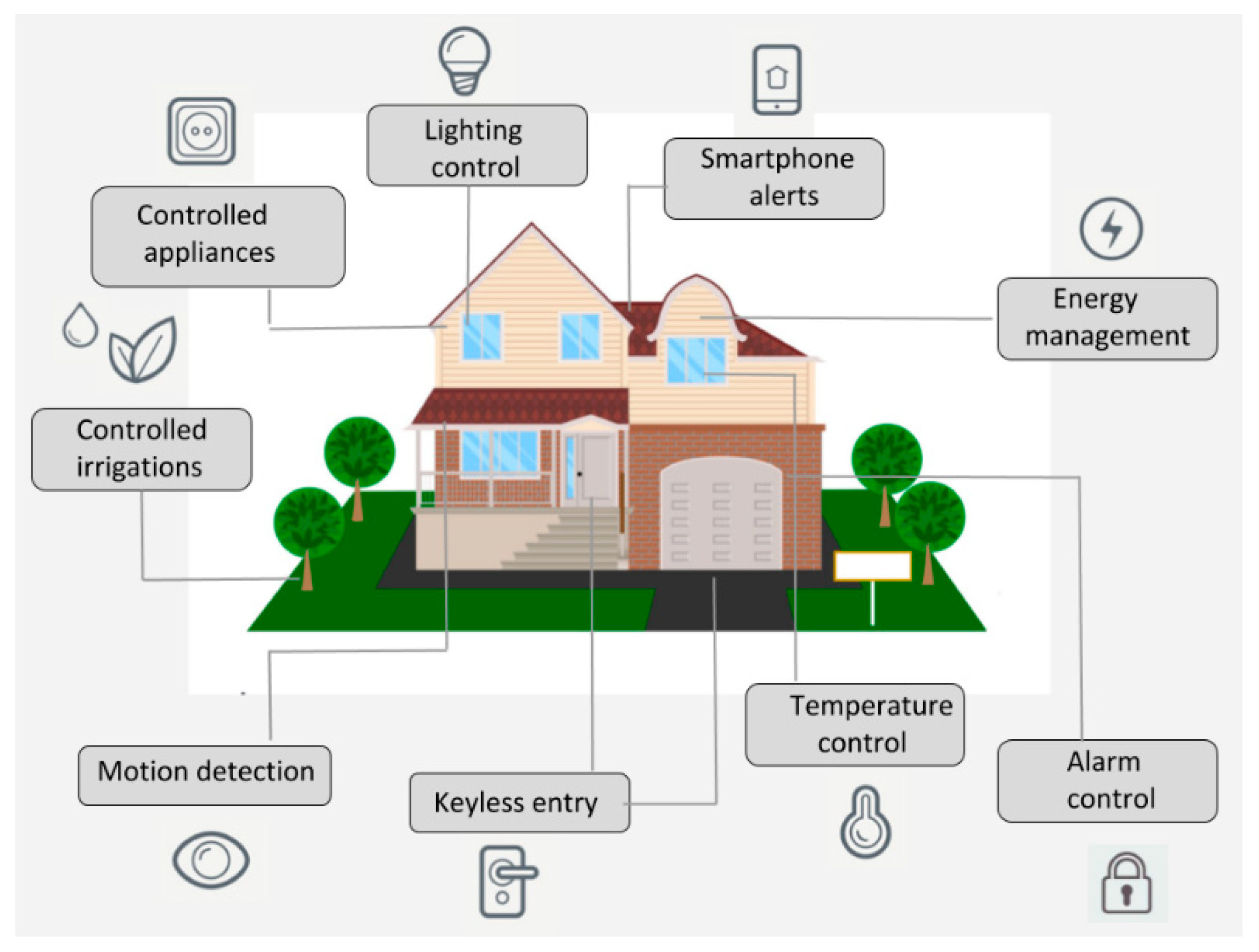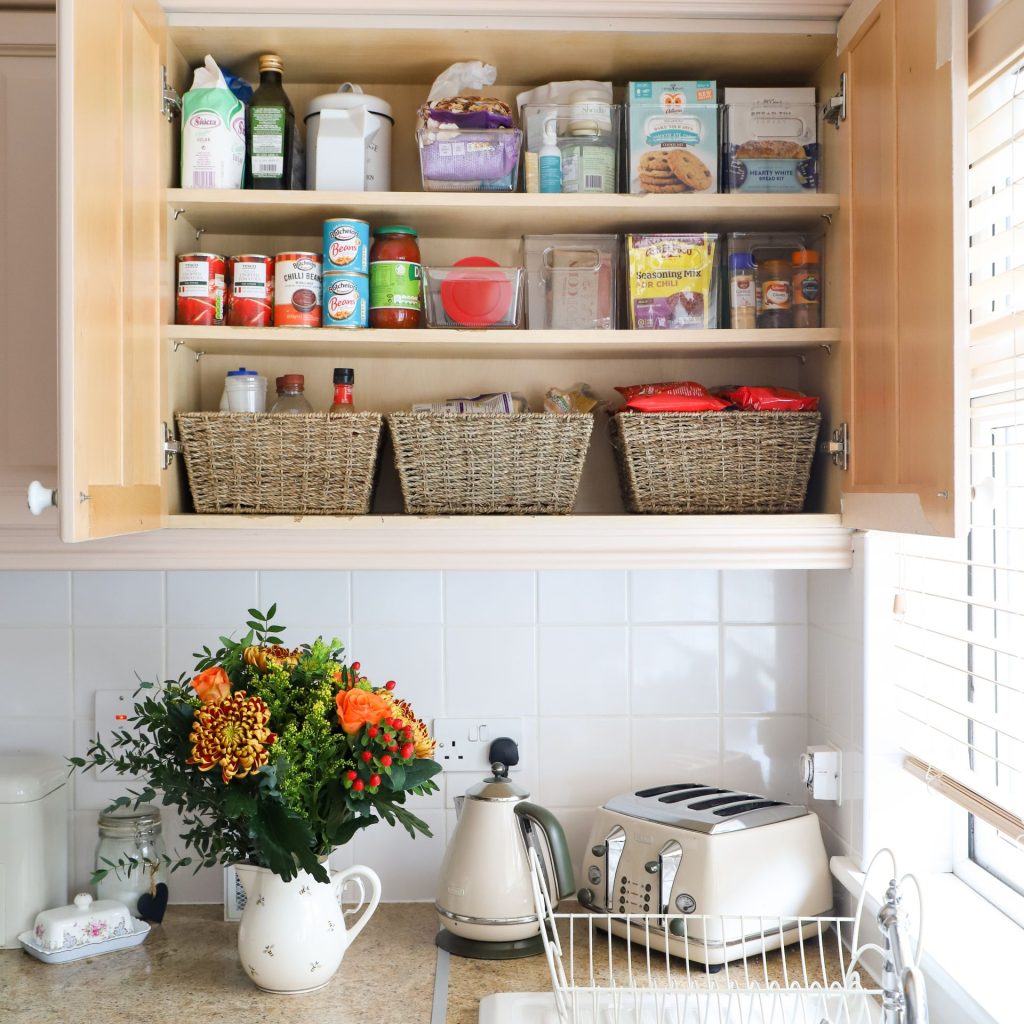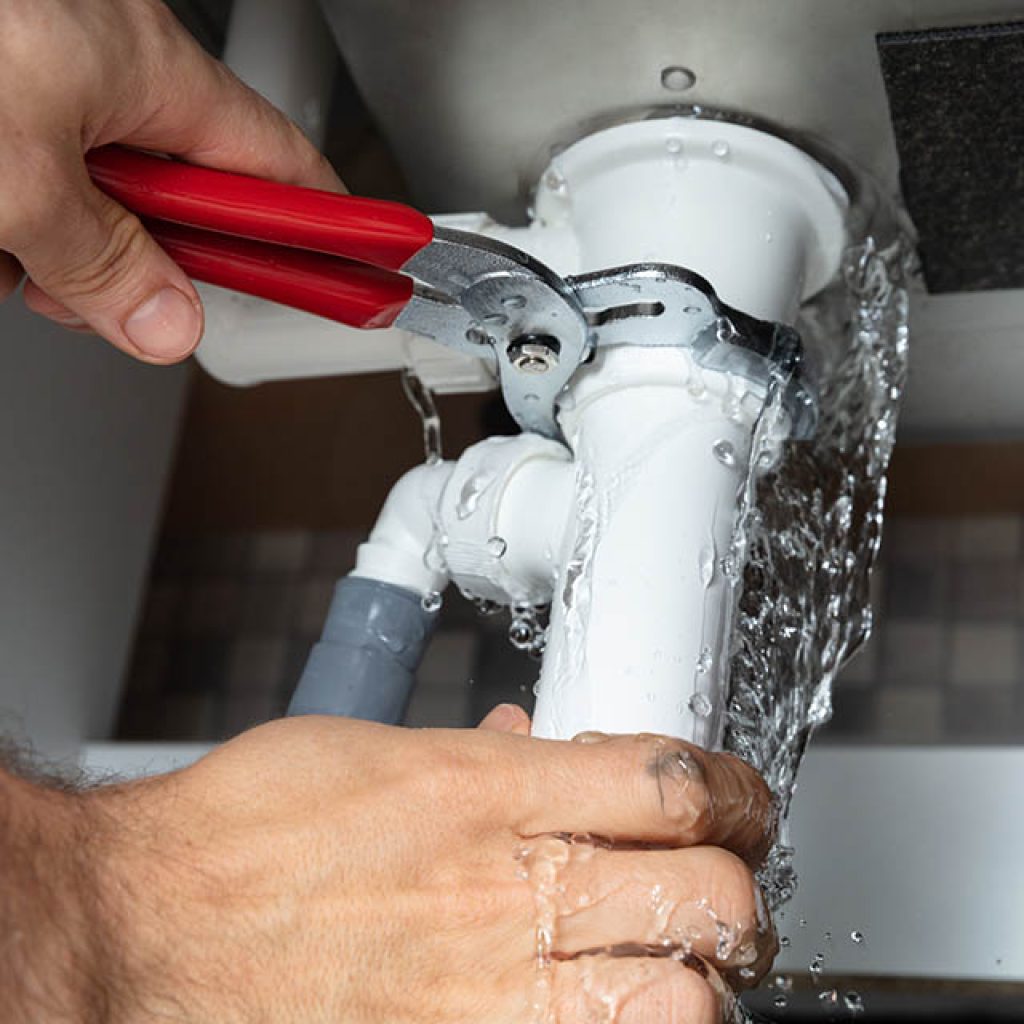Smart sensors are transforming home security and efficiency. They provide real-time monitoring and control.
Smart sensors can make your home safer and more efficient. These devices detect motion, light, temperature, and more. They connect to your smartphone, allowing you to control your home from anywhere.
Imagine receiving an alert if someone tries to enter your home or adjusting your thermostat with a tap on your phone.
Smart sensors offer convenience and peace of mind. They help save energy by optimizing home systems. Installing smart sensors for home security and efficiency is a smart move for modern homeowners.
This guide will explain how to start installing smart sensors for home security and efficiency to get the maximum benefit from your setup. Stay tuned to learn how smart sensors can enhance your home security and efficiency.

Credit: us.sengled.com
Types Of Smart Sensors
Welcome to the smart home era, where technology meets convenience and security. Smart sensors are the heart of this innovation. They enhance our home security and boost energy efficiency. But what are these sensors, and how do they work?
Let’s dive into the different types of smart sensors available today.
Security Sensors
When it comes to safeguarding your home, smart security sensors are indispensable. These devices are designed to detect unusual activities and alert you instantly. Here are some common types:
- Motion Sensors: These are the watchdogs of your home. Motion sensors detect movement and can trigger alarms or lights. They are perfect for monitoring entry points like doors and windows.
- Door/Window Sensors: These sensors are placed on doors and windows. They alert you if someone tries to open them. Simple yet effective, they are a must-have for any home security system.
- Glass Break Sensors: If a burglar tries to break a window to get in, a glass break sensor will detect the sound and set off an alarm. It’s an extra layer of protection that can make all the difference.
- Smoke and Carbon Monoxide Detectors: Safety isn’t just about keeping intruders out. These sensors alert you to smoke and carbon monoxide, keeping your family safe from fire and poisoning.
Efficiency Sensors
Smart sensors aren’t just about security; they also help in making your home more efficient. These sensors monitor and manage your energy use, saving you money and reducing your carbon footprint. Here are some examples:
- Temperature Sensors: These sensors work with your thermostat to optimize heating and cooling. They ensure that your home is always at the perfect temperature, without wasting energy.
- Light Sensors: These sensors adjust the lighting based on natural light availability. They can dim or brighten your lights, providing comfort and saving electricity.
- Water Leak Sensors: Placing these sensors near appliances or pipes can prevent costly water damage. They alert you at the first sign of a leak, giving you time to react before it becomes a big problem.
- Humidity Sensors: These sensors keep track of the humidity levels in your home. Maintaining proper humidity can prevent mold growth and improve air quality, making your home healthier and more comfortable.
To sum it up, installing smart sensors for home security and efficiency is a wise investment. They offer peace of mind by enhancing security and contribute to a more efficient, eco-friendly lifestyle. So, are you ready to make your home smarter?
Choosing The Right Sensors
When it comes to home security and efficiency, smart sensors are a game-changer. They not only protect your home but also help you save on energy bills. However, choosing the right sensors can be a daunting task with so many options available. Don’t worry, we’ve got you covered!
In this section, we will walk you through the factors you need to consider and introduce you to some popular brands that are worth your attention.
Factors To Consider
Before you rush to buy the latest smart sensor, it’s essential to consider a few key factors:
- Compatibility: Ensure the sensors are compatible with your existing smart home system. This avoids headaches down the line.
- Ease of Installation: Look for sensors that are easy to install. Some come with user-friendly manuals or even video tutorials.
- Range: The range of the sensor is crucial. Make sure it can cover the areas you need to monitor.
- Battery Life: Long battery life means fewer replacements. Check the specs for battery life before purchasing.
- Cost: While it’s tempting to go for the cheapest option, remember that quality often comes at a price. Balance your budget with your needs.
Popular Brands
Now that you know what to look for, let’s explore some popular brands that stand out in the market:
| Brand | Features | Price Range |
|---|---|---|
| Ring | Easy integration with other Ring devices, reliable motion detection | $20 – $45 |
| Philips Hue | Excellent for lighting control, energy-efficient | $15 – $150 |
| Arlo | High-definition video, weather-resistant | $100 – $300+ |
| Xiaomi | Affordable, good range, easy installation | $20 – $60 |
These brands have earned their reputation by providing reliable and efficient smart sensors. Each has its own unique features, so choose one that best fits your needs and budget.
Choosing the right smart sensors for your home can seem overwhelming, but with these tips and brand recommendations, you’ll be well on your way to a safer, more efficient home. Remember, the right sensor can make all the difference. Happy shopping!
Preparation For Installation
Installing smart sensors for home security and efficiency is a fantastic way to enhance both safety and energy management. However, before diving into the installation process, it’s crucial to prepare adequately.
Proper preparation ensures a smooth installation and the optimal performance of your smart sensors for home security and efficiency.
Let’s take a closer look at the necessary tools and pre-installation checklist to get you started.
Tools Required
Before beginning, gather the essential tools. Having everything at hand can save time and prevent frustration. Here’s a list of basic tools you might need:
- Screwdriver: A versatile tool for mounting sensors.
- Drill: Handy for creating holes if needed.
- Measuring Tape: Ensures accurate placement of sensors.
- Ladder: Useful for installing smart sensors for home security and efficiency at higher points.
- Smartphone: Necessary for configuring and testing sensors.
Having these tools ready will make the installation process smoother and more efficient.
Pre-installation Checklist
Before installing smart sensors for home security and efficiency, it’s essential to follow a pre-installation checklist. This ensures everything is in place for a successful installation:
- Read the Manual: Familiarize yourself with the instructions provided by the manufacturer.
- Check Wi-Fi Connection: Ensure your home has a stable internet connection. Smart sensors rely on Wi-Fi for communication.
- Decide on Placement: Identify the best locations for your sensors. Consider areas that need monitoring, like doors, windows, and hallways.
- Test Areas: Check the chosen areas for any obstacles that might interfere with sensor signals.
- Gather Tools: Ensure all necessary tools are within reach.
- Clean Surfaces: Clean the areas where sensors will be mounted. Dust and dirt can affect sensor performance.
This checklist will help you set the stage for a hassle-free installation. Remember, preparation is key to ensuring your smart sensors work effectively.
By following these simple steps, you can avoid common pitfalls and ensure your smart sensors are installed correctly and efficiently. Ready to get started? Your home’s security and efficiency are just a few steps away!

Credit: www.mdpi.com
Step-by-step Installation
Installing smart sensors for home security and efficiency can seem daunting, but with a few simple steps, you can enhance your home’s security and efficiency. Whether you’re a tech enthusiast or a beginner, this guide will walk you through the process of installing smart sensors for home security and efficiency. By the end, you’ll have a smarter home that’s safer and more energy-efficient.
Installing Security Sensors
First, let’s tackle the security sensors. These devices are designed to keep your home safe from intruders. Here’s how to install them:
- Choose Your Locations: Identify key entry points like doors and windows. These are prime spots for sensors.
- Gather Your Tools: You’ll need a drill, screws, and a screwdriver. Some sensors might come with adhesive strips for easy installation.
- Mount the Sensors: Follow the manufacturer’s instructions. Typically, you’ll attach the sensor to the door or window frame and the magnet to the moving part.
- Connect to Your System: Sync the sensors with your home security system. This might involve using a smartphone app or a central hub.
- Test the Sensors: Open and close the doors and windows to ensure the sensors trigger correctly.
And there you have it! Your home is now a fortress, ready to detect any unauthorized entry.
Installing Efficiency Sensors
Next, let’s focus on efficiency sensors. These devices help you save energy by monitoring and optimizing your home’s environment.
- Identify High-Usage Areas: Think about where you use the most energy, like the kitchen, living room, or bedrooms.
- Prepare Your Equipment: You’ll need the sensors, a drill, and possibly some screws.
- Position the Sensors: Place them near light switches, thermostats, or appliances. Make sure they’re unobstructed for accurate readings.
- Sync with Your Smart System: Connect the sensors to your home automation system. This usually involves using an app or a central hub.
- Monitor and Adjust: Use the data from the sensors to adjust your usage. For example, you might lower your thermostat or turn off lights when not needed.
With these sensors in place, you’ll not only save money but also reduce your carbon footprint. Win-win!
Installing smart sensors for home security and efficiency may seem like a lot of work, but with a little effort, you can transform your home into a modern, efficient, and secure living space. Happy installing!
Integration With Smart Home Systems
Integrating smart sensors into your home security system boosts efficiency and convenience. These sensors can seamlessly connect with your existing smart home systems. This integration allows you to control and monitor your home from anywhere.
Let’s explore how to connect these sensors to your home hub and sync them with other devices.
Connecting To Home Hub
Begin by ensuring your home hub is compatible with your smart sensors. Most smart hubs, like Amazon Echo or Google Home, support a wide range of sensors.
Follow the instructions provided by your sensor’s manufacturer. Usually, this involves pairing the sensor with the hub through a dedicated app. This setup lets you manage all devices from a single interface.
Once connected, you can customize settings and create automation rules. For instance, you can set your lights to turn on when a motion sensor detects movement. This increases both security and energy efficiency.
Syncing With Other Devices
Smart sensors can also sync with various other devices in your home. This includes smart locks, lights, thermostats, and cameras. By syncing these devices, you create a cohesive smart home ecosystem. This ensures all components work together seamlessly.
For example, a door sensor can trigger your camera to start recording. Or, a temperature sensor can adjust your thermostat for optimal comfort. The possibilities are endless, and the integration enhances your overall home experience.
To sync your devices, use the app associated with your home hub. Follow the step-by-step guide to add each device. Make sure to test each connection to ensure everything works smoothly.
Maintenance And Troubleshooting
Installing smart sensors for home security and efficiency can transform your living space into a safer, more energy-efficient haven. But like any technology, these sensors require regular maintenance and occasional troubleshooting to ensure they work effectively. Let’s delve into how you can keep your smart sensors in top shape with some practical tips and solutions.
Regular Maintenance Tips
Just like any other device, smart sensors need a little TLC to function at their best. Here are some simple yet effective maintenance tips:
- Check Battery Levels: Smart sensors often run on batteries. Regularly check and replace batteries to avoid sudden power loss.
- Keep Sensors Clean: Dust and grime can interfere with sensor accuracy. Gently clean the sensors with a microfiber cloth every few weeks.
- Update Firmware: Manufacturers release firmware updates to improve performance and security. Ensure your sensors have the latest updates installed.
- Test Regularly: Conduct routine tests to make sure the sensors are responsive. This can usually be done through the companion app.

Common Issues And Solutions
No technology is foolproof. Here are some common issues you might face with smart sensors and how to troubleshoot them:
| Issue | Possible Solution |
|---|---|
| Sensor Not Responding | Check the power source. Replace batteries or ensure the device is properly plugged in. |
| False Alarms | Ensure the sensor is not placed near heat sources or windows. Adjust the sensitivity settings if available. |
| Connectivity Issues | Restart your Wi-Fi router and ensure the sensors are within range. Sometimes, a simple reboot can solve connectivity problems. |
| Inaccurate Readings | Calibrate the sensor according to the manufacturer’s instructions. Make sure it’s properly aligned and not obstructed. |
Remember, a little prevention goes a long way. Regular maintenance can help you avoid many common issues. And when problems do arise, a quick troubleshooting session can often set things right. So, don’t be afraid to get hands-on with your smart sensors. After all, a well-maintained system is the cornerstone of a secure and efficient home.
Future Trends In Smart Sensors
The future of smart sensors holds incredible promise for home security and efficiency. With each passing year, technology advances, making these devices even more effective and accessible. Let’s explore some of the most exciting trends in smart sensor technology.
Advancements In Technology
Smart sensors are becoming more sophisticated. They use artificial intelligence (AI) to learn patterns and detect anomalies. This capability allows them to predict potential security threats or inefficiencies in your home.
Smaller and more efficient sensors are now available. These sensors consume less power and offer longer battery life. This improvement means you can place them in more locations without worrying about constant recharging.
Integration with other smart home devices is also improving. Sensors can now communicate seamlessly with smart lights, thermostats, and security cameras. This interconnectedness creates a more cohesive and responsive home environment.
Impact On Home Security And Efficiency
Enhanced smart sensors significantly boost home security. They can detect unusual movements or sounds, sending instant alerts to your smartphone. This immediate notification helps you respond faster to potential threats.
These sensors also improve home efficiency. They monitor energy usage and suggest ways to reduce waste. For example, they can detect when a room is empty and adjust the thermostat accordingly.
Smart sensors contribute to a more comfortable living space. They can optimize lighting and temperature based on your habits. This adjustment creates a more personalized and enjoyable home environment.
Overall, the future trends in smart sensors promise safer and more efficient homes. As technology continues to advance, these devices will become even more integral to our daily lives.
Frequently Asked Questions
Which Sensor Is Best For Home Security?
The best sensor for home security is a motion sensor. It detects movement and triggers alarms, providing reliable protection.
How Much Does It Cost To Install A Home Security System?
Home security system installation costs range from $100 to $1,500. Prices vary based on equipment and installation fees.
How Many Sensors Do I Need For Home Security?
The number of sensors needed depends on the size of your home. Typically, one sensor per entry point is recommended.
How Long Does A Smart Home Installation Take?
A smart home installation typically takes 1 to 3 days. The duration depends on the system’s complexity and home size.
Conclusion
Smart sensors enhance home security and efficiency. They provide real-time alerts and monitoring. Installation is simple, even for beginners. These devices can help save energy and lower utility bills. Smart sensors are a valuable addition to any home. Enjoy peace of mind and improved home management.
Investing in smart technology today can lead to a safer, smarter tomorrow. Keep your home secure and efficient with these innovative solutions.











